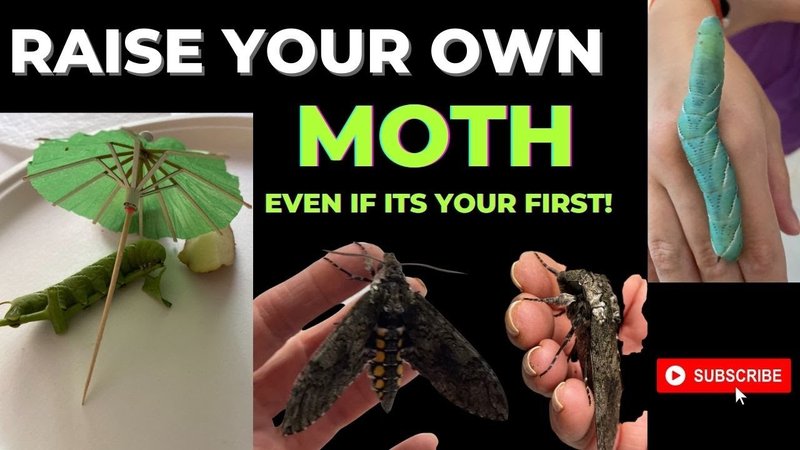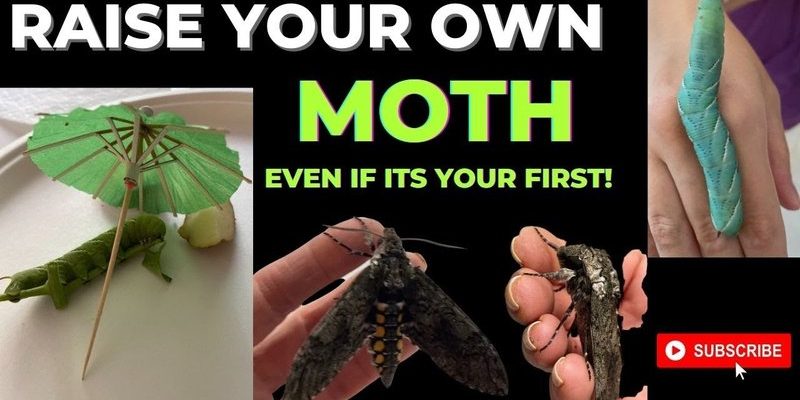
In this article, we’ll explore how to manage hornworms safely and effectively, ensuring that you and your pet can enjoy their benefits without any hiccups. We’ll dive into everything from choosing the right hornworms to handling and storing them safely. So, pull up a chair, grab your favorite drink, and let’s dig into the nitty-gritty of safe hornworm handling.
Understanding Hornworms: A Brief Overview
Before we get into the how-tos, it’s good to understand what hornworms are. These little creatures are the larvae of the *Manduca sexta* moth, often referred to as the tomato hornworm. They’re large, green caterpillars that can grow up to 4 inches long and are notoriously known for their horn-like structure at one end. They might look a bit odd, but they offer a fantastic nutritional punch for animals like lizards and birds.
Hornworms are rich in protein and low in fat, making them a fine choice for pet diets. When appropriately offered, they can promote healthy growth, shiny feathers, and plenty of energy in your pets. However, handling them requires care. They can wiggle a lot, and their wet bodies can be a bit slippery, so it’s wise to approach them with a gentle hand.
Choosing Healthy Hornworms
The journey toward safe hornworm handling starts with choosing the right ones. You want to pick hornworms that are vibrant and lively, steering clear of any that look dull or lethargic. Healthy hornworms should be a bright green color, plump, and active when you pick them up.
When you’re purchasing hornworms, consider sourcing them from reputable suppliers. Many people find success going to local pet stores or trusted online vendors. Always check for freshness—hornworms can rapidly decline in health if stored improperly. Here’s a quick checklist for selecting your hornworms:
- Bright green coloration
- Lively movement when handled
- No visible signs of mold or decay
- Proper size for your pet’s needs
Choosing healthy hornworms is like picking ripe fruit; they should feel firm to the touch and ready to eat.
Safe Handling Techniques
Now that you’ve got some healthy hornworms, it’s time to handle them properly. First off, you’ll want to wash your hands thoroughly before touching them. Hornworms, although not harmful, can carry bacteria that you don’t want to transfer to your pet. Here’s how to handle them safely:
1. **Use a container**: Rather than holding a hornworm in your palm, grab a small container with some ventilation. This way, if they squirm, they won’t slip away.
2. **Gentle touch**: When you pick one up, do it gently. You don’t want to squeeze too hard; remember, these are living creatures!
3. **Avoid direct contact**: If you’re handling multiple hornworms, consider using a pair of tweezers designed for feeding. This reduces the chance of accidentally hurting them.
By following these techniques, you ensure a safe experience for both you and your pets.
Storing Hornworms Safely
Once you’ve got your hornworms, how do you keep them in good shape? Proper storage is key! Hornworms need a particular environment to thrive. They’re not like traditional pet food that can sit on a shelf for weeks.
Here are some tips for storing hornworms:
– **Temperature**: Keep them in a cool place, ideally between 70°F to 80°F. If it’s too hot, they might pupate too soon, leading to moths instead of a delicious treat for your pets.
– **Ventilation**: Make sure their container has proper ventilation. This prevents mold from forming while allowing enough airflow to keep them happy.
– **Humidity**: A little moisture can be beneficial, but be careful not to drown them. Ensure the substrate they’re in is slightly moist, mimicking their natural habitat.
With the right storage methods, your hornworms can stay fresh and healthy for up to several weeks.
Feeding Your Pets Hornworms
You might be wondering how to introduce hornworms into your pet’s diet. It’s pretty simple but requires a bit of finesse. Start by offering one or two hornworms at a time, especially if your pet is new to this treat. Here’s how you can make the process smooth:
1. **Observe your pet**: Watch how they react to the hornworm. Do they sniff it, or do they seem uninterested? Some pets might take to hornworms immediately, while others need a bit of encouragement.
2. **Mix it up**: If your pet has a regular diet, consider mixing the hornworms with other food items. For instance, placing them with greens or offering them alongside other insects can excite your pet.
3. **Freshness is key**: Always provide fresh hornworms. A wilting or dead hornworm can discourage your pet from eating them again.
Feeding them properly ensures that they become a regular, healthy part of your pet’s diet.
Common Mistakes to Avoid
Even seasoned pet owners might make a few mistakes when handling hornworms. Here are some common pitfalls to avoid:
– **Ignoring hygiene**: Skipping handwashing or using unclean tools can lead to health issues for your pet. Always prioritize cleanliness.
– **Overfeeding**: While hornworms are nutritious, they shouldn’t be the only food your pets eat. Balance is essential for their overall health.
– **Neglecting storage**: Poor storage often leads to premature death or deterioration of hornworms, leaving you with less than ideal treats for your pets.
Awareness of these common mistakes will keep both you and your pet happy and healthy.
Keeping Your Hornworms Happy
To ensure your hornworms thrive until it’s time for feeding, it’s essential to keep them in a conducive environment. Remember, happy hornworms make for happy pets! Here are a few tips to help:
– **Regular checks**: Examine your hornworms daily to ensure they’re healthy and active. If you see any signs of illness, it’s better to discard them instead of risking your pet’s health.
– **Fresh food supply**: Provide a suitable food source, like fresh leaves from tomato or tobacco plants. This keeps them nourished while they wait to be fed to your pets.
– **Avoid overcrowding**: Give them enough space to move around. If they’re crammed into a small container, they may become stressed and unhealthy.
Doing these simple things can improve the lifespan of your hornworms and make them an excellent feeding option for your pets.
Taking care of hornworms isn’t just about providing food; it’s about creating a safe, nurturing environment for both your pet and the worms themselves. With the right knowledge and practices, you can enhance your pet’s diet with these nutrient-rich treats while ensuring everyone stays healthy and happy.
Remember, when it comes to hornworms, approach them with care, keep their living conditions optimal, and you’ll find that they can be a fantastic and safe addition to your pet care routine. Happy pet feeding, and enjoy your journey into the world of hornworms!

